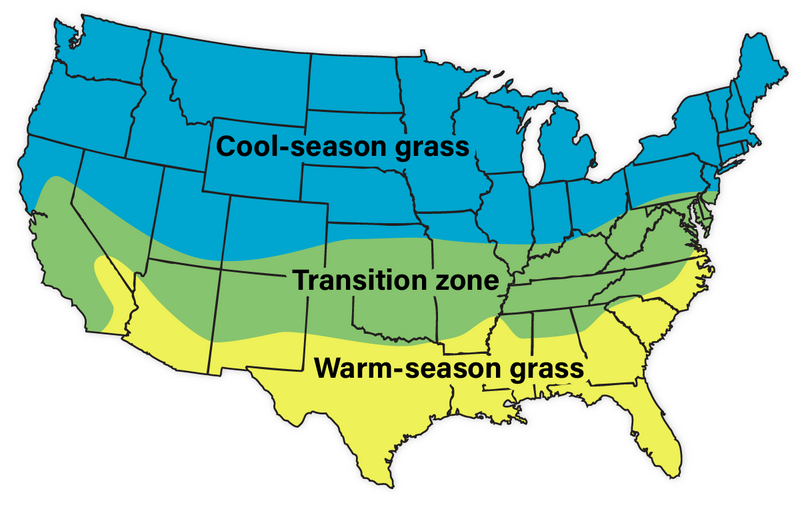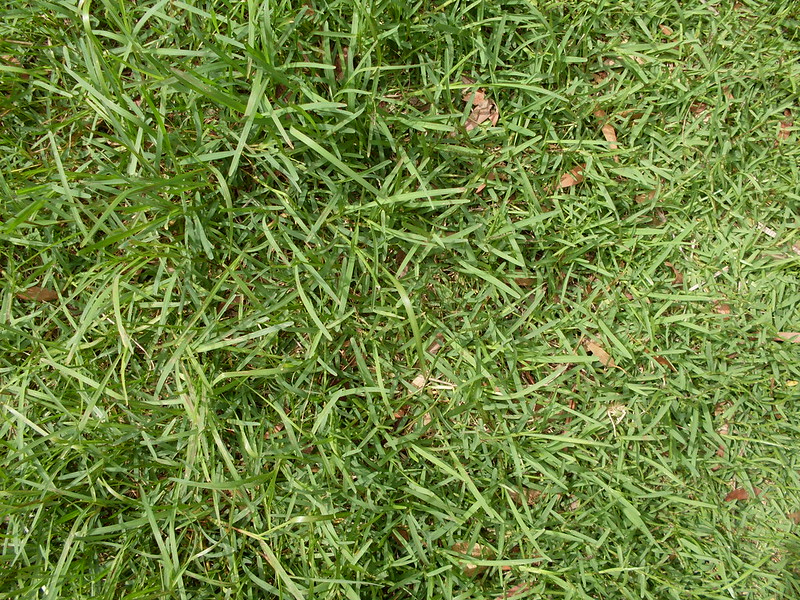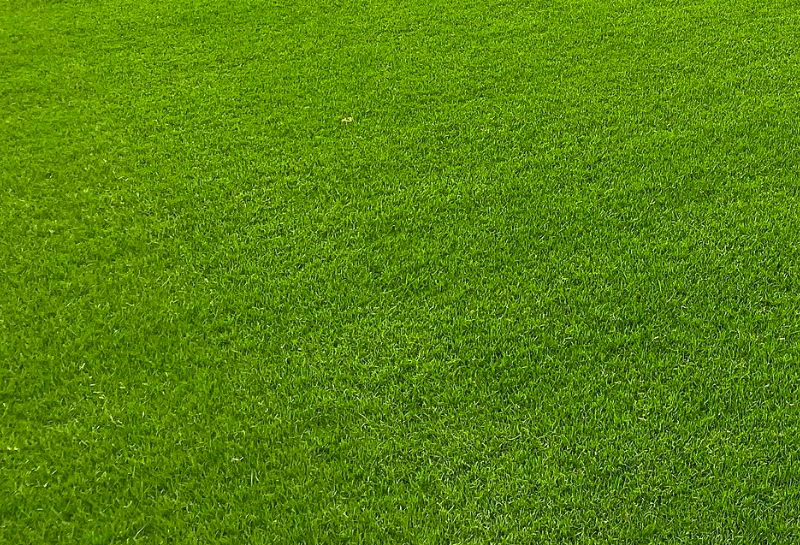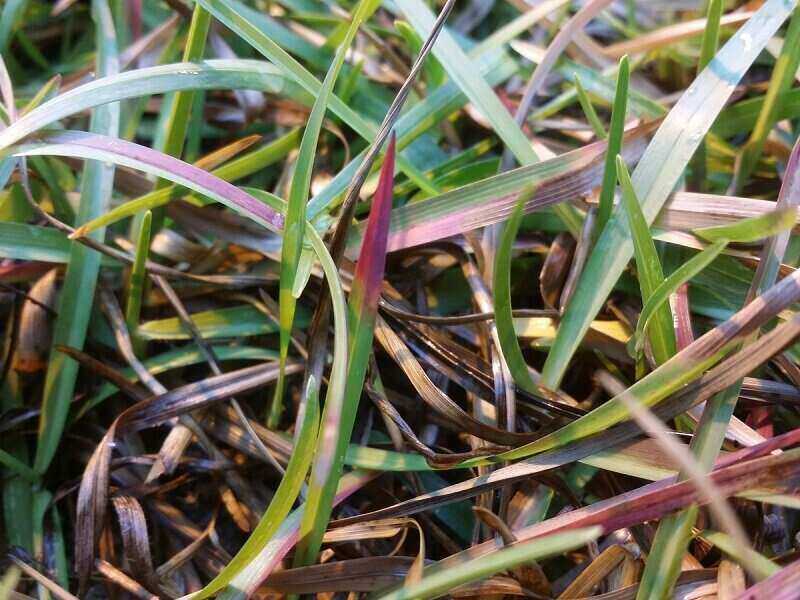
Knoxville was once known as “The Scruffy City,” but that doesn’t mean your lawn needs to be scruffy too. Make sure your lawn looks its best by taking great care of it year-round. The first step to having a great lawn, though, is to make sure that you’ve planted the right kind of grass for your property and lifestyle.
The 6 best grass types for your home in the Heart of the Valley are:
Knoxville is located in the transition zone, which means you could plant cool-season or warm-season grass types, depending on the characteristics of your environment. Most areas in Knoxville and Eastern Tennessee are better-suited for cool-season grasses. If your home is at a lower elevation and receives a lot of sunlight, warm-season grasses might be better for you. Find out which one is the right choice for your home.

1. Tall fescue

Ty Haller | Flickr | CC BY-SA 2.0
Tall fescue is one of Knoxville’s favorite grass types. It’s an extremely adaptable, cool-season grass, making it a great choice for the climate in Eastern Tennessee. What makes tall fescue adaptable is that it’s more tolerant to heat, drought, and shade compared to other cool-season grass types. It’s durable throughout the winter and keeps its color year-round.
Tall fescue is relatively low maintenance and can handle a lot of foot traffic. Thatch is rarely an issue with tall fescue. Tall fescue is coarse, dark green, and has a wide blade. It’s a wonderful option for active families or homeowners with pets.
- Classification: Cool-season grass
- Spreads by: Bunch-type
- Shade tolerance: High
- Drought tolerance: High
- Foot traffic tolerance: Moderate to high
- Maintenance needs: Low; can grow in low-nutrient soil
- Recommended mowing height: 2-3 inches
- Potential for disease: Low
Grass Seed Options:
– Triple-Play Tall Fescue Grass Seed Blend (5000 sq ft)
– Eretz Kentucky 31 K31 Tall Fescue Grass Seed (choose your size)
– Pennington The Rebels Tall Fescue Grass Seed Mix (7 lb.)
2. Kentucky bluegrass

Brenda Ryan | Lawn Love
Kentucky bluegrass is another favorite and is widely used across the country. It is durable and maintains a soft, smooth texture that is pleasant on bare feet. Kentucky bluegrass is what most people imagine when they’re thinking of turfgrass. It handles cold temperatures better than the other cool-season grasses, but is more sensitive to high temperatures and drought.
Kentucky bluegrass is a bit more high maintenance and will go dormant during droughts. Be sure to keep an eye on thatch buildup. If you can handle putting in some effort to maintain it, this grass type can be a wonderful option for your home.
- Classification: Cool-season grass
- Spreads by: Rhizomes
- Shade tolerance: Moderate; needs at least four hours of direct sunlight
- Drought tolerance: Moderate; does well with proper irrigation and goes dormant during extended droughts
- Foot traffic tolerance: High
- Maintenance needs: High; low fertility will cause delayed growth and also can lead to stripe rust
- Recommended mowing height: 2-3 inches
- Potential for disease: Moderate to high
Grass Seed Options:
– Jonathan Green (11970) Blue Panther Kentucky Bluegrass Grass Seed (3 lbs.)
– SeedRanch Midnight Kentucky Bluegrass Seed (5 lbs.)
– Jacklin Seed – Biltmore Blue Blend – 100% Kentucky Bluegrass (5 lbs.)
3. Creeping red fescue

Matt Lavin Flickr | CC BY-SA 2.0
Creeping red fescue is a variety of fine-leaf fescue that thrives in shaded environments. It can
be used alongside Kentucky bluegrass in shaded areas of your lawn. While it’s not the most popular grass type, it can be a great option for busy homeowners who don’t have a lot of time for maintaining a lawn. It requires little mowing, fertilization, or irrigation. It’s not very durable compared to other grasses, so it’s not good for homes with heavy human or pet foot traffic.
- Classification: Cool-season grass
- Spreads by: Rhizomes
- Shade tolerance: High
- Drought tolerance: High
- Foot traffic tolerance: Low
- Maintenance needs: Low
- Recommended mowing Height: At least 2 inches
- Potential for disease: Moderate
Other Notes: Creeping red fescue can be left unmowed as a ground cover.
Grass Seed Options:
– Eretz Creeping Red Fine Fescue Seed (choose your size)
– Outsidepride Creeping Red Fine Fescue Grass Seed (25 lbs.)
4. Buffalograss

John Tann | Flickr | CC BY-SA 2.0
Buffalograss is a warm-season grass that can survive extreme heat, extended droughts and grow in low-nutrient soil. While it needs plenty of direct sunlight, overall it doesn’t require much maintenance. Beware of overwatering buffalograss — overwatering creates the perfect conditions for weeds and disease to thrive.
Buffalograss can tolerate cold weather better than other warm-season grasses. Buffalograss is also the base of most native seed mixes. This grass type grows well in clay soil.
- Classification: Warm-season grass
- Spreads by: Stolons
- Shade tolerance: Low; prefers direct sunlight
- Drought tolerance: Very high; without irrigation, it will turn brown in the summer but recovers quickly when watered
- Foot traffic tolerance: Low
- Maintenance needs: Very low
- Recommended mowing height: Between 2.5-4 inches
- Potential for disease: Low
Grass Seed Options:
– Everwilde Farms Buffalograss Seeds (1 lb. of seeds)
– Buffalograss seed (primed) (5-lb. bag)
5. Bermudagrass

Gilba Solutions Pty Ltd | Wikimedia Commons | CC BY-SA 4.0
Bermudagrass is commonly used for athletic fields, and its durability is what makes it a great option for active families. Bermudagrass does not produce allergenic pollen and it can be invasive in backyard gardens. Look out for thatch buildup.
Bermudagrass ranges in color from gray-green to blue-green to dark green. In the winter, bermudagrass can go dormant and becomes dull in color. While it is sensitive to cold temperatures, it is quite tolerant to heat and drought.
- Classification: Warm-season grass
- Spreads by: Stolons and rhizomes
- Shade tolerance: Low; bermudagrass prefers full sun
- Drought tolerance: High; will go dormant during an extended drought
- Foot traffic tolerance: High; more sensitive when the temperature is low
- Maintenance needs: Moderate to high; needs to be fertilized monthly during the summer; hybrid varieties may need more maintenance
- Recommended mowing height: 1.5-2.5 inches
- Potential for disease: Few pest problems; weeds have a greater potential to invade during the winter.
Grass Seed Options:
– Pennington Bermudagrass Bare Spot (5 lb. bag)
– Pennington Smart Seed Bermudagrass Mix (8.75-lb. bag)
– Scotts Turf Builder Bermudagrass (10-lb. bag)
– Hancock Seed Co. Bermudagrass (50-lb. bag)
6. Centipedegrass

Pxhere
Centipedegrass is a low-maintenance warm-season grass, perfect for a busy household.
Compared with other warm-season grasses, centipedegrass is a bit more sensitive to the cold. It’s a light green color, and iron deficiency will cause it to turn a light yellow. Keep in mind that it’s not very tolerant of foot traffic.
- Classification: Warm-season grass
- Spreads by: Stolons
- Shade tolerance: Moderate; prefers full sun
- Drought tolerance: Low to moderate. Overwatering can lead to weeds.
- Foot traffic tolerance: Low
- Maintenance needs: Low; avoid over-fertilizing; watch out for iron deficiency
- Recommended mowing height: 1.5-2.5 inches
- Potential for disease: Low; nematodes can become an issue
Other Notes: Produces less thatch than other warm-season grass types.
Grass Seed Options:
– Gulf Kist Coated Centipedegrass Seeds (1 lb.)
– Scotts EZ Seed Patch and Repair Centipedegrass (3.75 lbs.)
– TifBlair Centipedegrass (5-lb. bag)
– Pennington Centipedegrass and Mulch (5-lb. bag)
How to choose the best grass type for your Knoxville home
There are plenty of things to consider when figuring out which grass type is best for your property, especially when living in the transition zone. While tall fescue, Kentucky bluegrass, creeping red fescue, buffalograss, Bermudagrass, and centipedegrass can all do well in Knoxville, you should keep a few things in mind before coming to a decision:
- How much free time do you have for yard maintenance?
- Tall fescue and creeping red fescue are known for requiring very little maintenance compared to other grass types.
- Do you have an active household?
- Kentucky bluegrass and bermudagrass can handle plenty of activity from playful kids and pets.
- How sunny is your lawn?
- Creeping red fescue thrives in shaded areas, whereas bermudagrass requires a sunny yard to thrive.
- Do you have any water use restrictions?
- If you’re limiting water usage, go for buffalograss or centipedegrass.
Answer these questions and you’re on your way to finding the perfect grass type for your Knoxville home.
Need a hand keeping up with your yard? Contact a Knoxville lawn care professional to assist with all of your landscape design, installation, and maintenance needs.
Main Photo Credit: Brian Stansberry | Wikimedia Commons | CC BY 3.0
Lawn Love participates in the Amazon Services LLC Associates Program, an affiliate advertising program. Lawn Love may earn revenue from products promoted in this article.